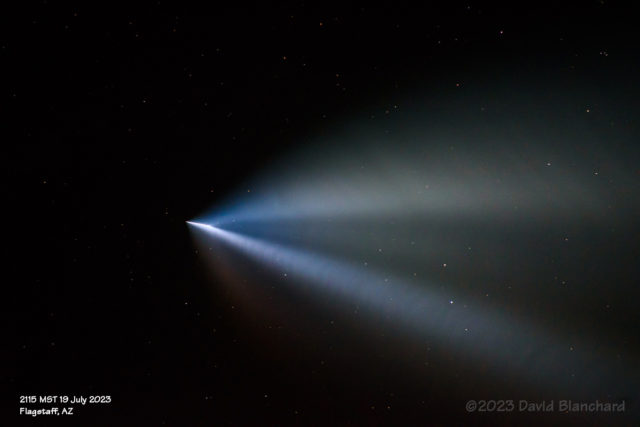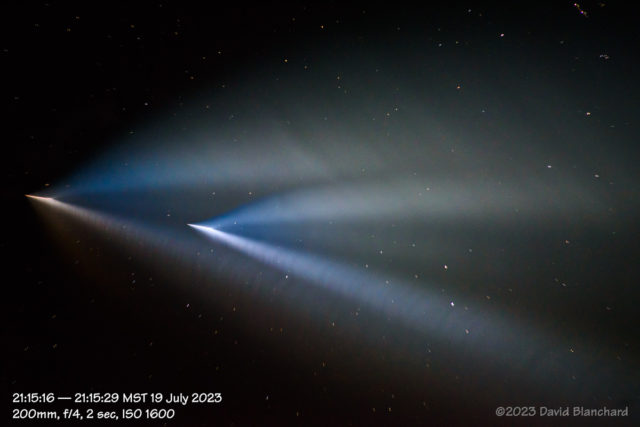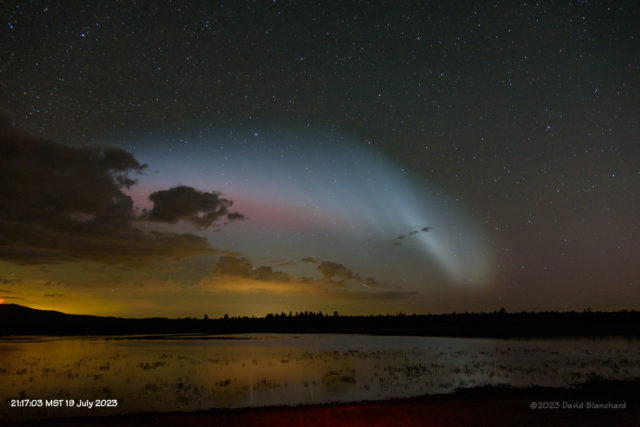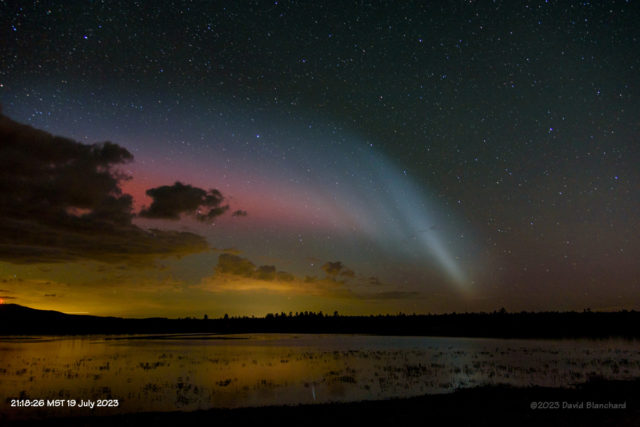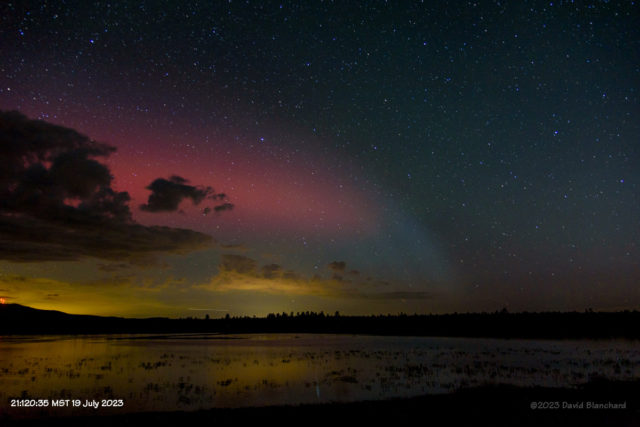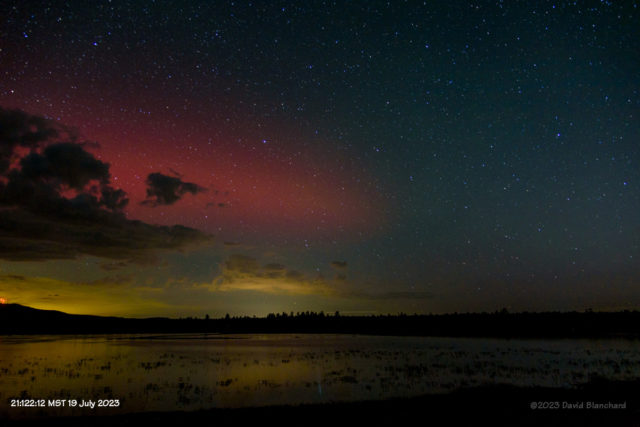Another SpaceX Falcon 9 was launched from Vandenberg SFB during the evening twilight hours (07 August 2023). And this one might have been even more spectacular than the previous launch (19 July 2023).

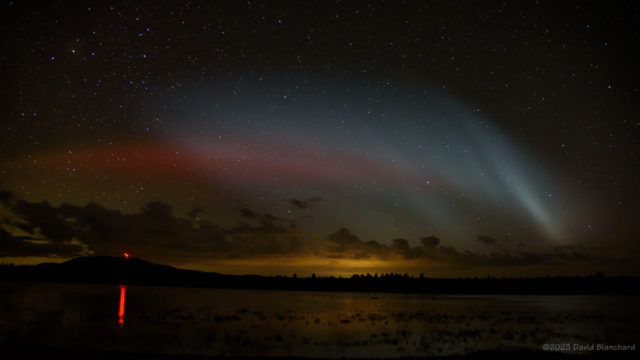
The rocket exhaust is beautifully illuminated by the light of the Sun–which is well below the horizon. Next, the rocket moves through the ionosphere and a red glow develops. From the SpaceWeather.com site:
“This is a well studied phenomenon when rockets are burning their engines 200 to 300 km above Earth’s surface,” says space physicist Jeff Baumgardner of Boston University. Some rocket engines spray water (H2O) and carbon dioxide (CO2) into the ionosphere, quenching local ionization by as much as 70%. The F-layer of the ionosphere is particulary effected. Oxygen ions (O+) in the F-layer are hungry for electrons, which they readily steal from the rocket’s exhaust. Captured electrons cascade down the oxygen atom’s energy levels, emitting red photons at a wavelength of 6300 Å–the same color as red auroras.
The exhaust and red glow were bright enough to be reflected in the waters of Lake Mary.
Time lapse of the launch of the SpaceX Falcon 9.
The next launch of a Falcon 9 is scheduled for much later at night and will not be as well lit as this launch.
